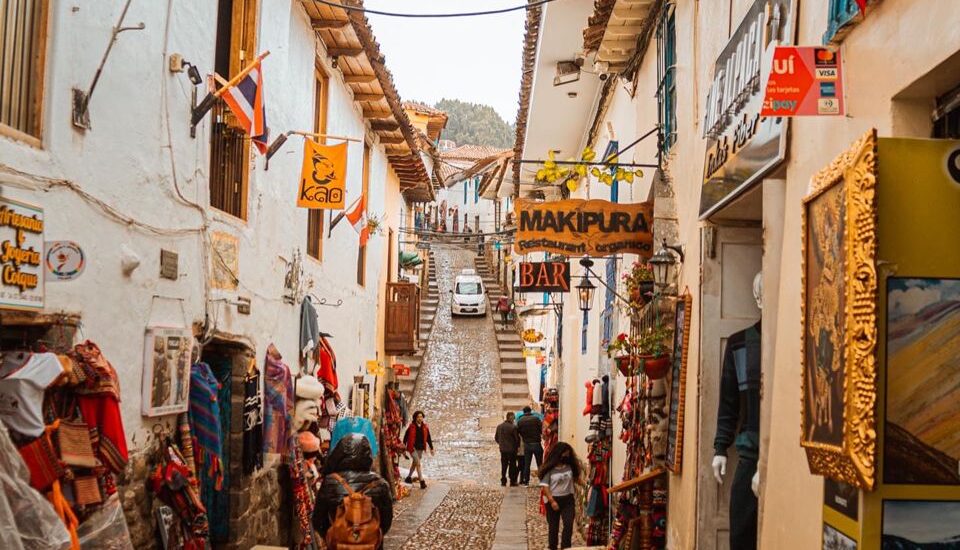The City of Cusco is a small town that was once the cradle of the largest empire in the American continent, the Inca Empire, it still holds traditions, culture, and secrets engraved in its streets. Believe us when we tell you that Cusco’s streets have something magical; it’s a total pleasure wandering through its cobblestone streets and letting yourself go.
These streets are located in the historic center of Cusco, they surround the “Plaza de Armas” (Cusco’s main square), an area that was once inhabited by the Incas. Today, we will tell you Cusco’s best-kept secrets, so when you walk on it, you will see what’s behind its curious names.
Quechua Influence
Inca Civilization language was the Quechua, also known as “Runa Simi”. Although many people appropriate Quechua as “The Language of the Incas”, this is not true, as people and civilizations older than them used it as an official language.
This language still exists in the modern world, there are approximately 15 million speakers of Quechua worldwide, and most live in South America, particularly in Peru. Over 10 million people there speak both Quechua and Spanish, and the remaining 5 million speakers speak only Quechua.
The preservation of indigenous languages like Quechua is essential to preserving Peru’s distinctive cultural variety. They maintain these languages for future generations and work to develop a love and respect for them, government institutions and organizations often collaborate. Quechua is present in the names of Cusco’s streets as part of their legacy, as we will see next.
Cusco’s Streets History
Siete Cuartones Street: The “Seven Beam Street” is near Saphy Street, one of the most famous streets in Cusco, as the Saphy River used to flow once there. This street gets its name from the seven stone beams (cuartones) that were formerly located near Don Diego de Vargas y Carbajal’s stone and lime bridge.
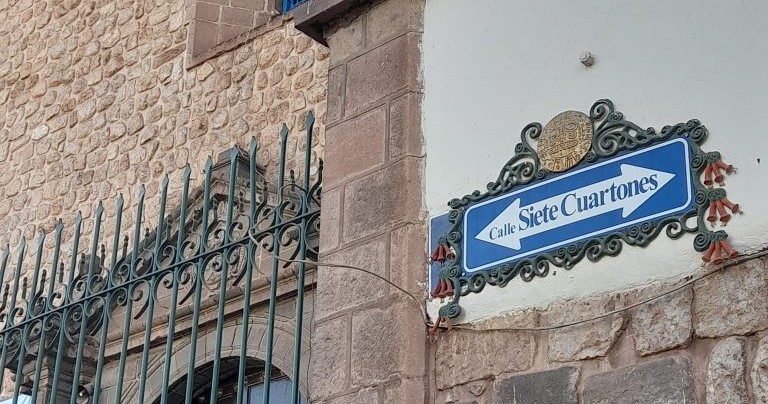
The original stone beams have vanished, and now the name of this street is all that remains due to the city’s development and population growth. One of Cusco’s oldest schools, the Bolivariano School and the Educandas Girl School, are located next to Seven Beam Street. This historic street may be reached on foot in around ten minutes from Cusco’s Plaza de Armas.
Hatun Rumiyoc Street: The name of this Quechua street can be rendered as “Where the large stone is”. On the street’s right wall, you’ll find the famous 12-angle stone, which alludes to the twelve months of the year, at the wall’s end is a great stone doorway made by Spanish artisans.
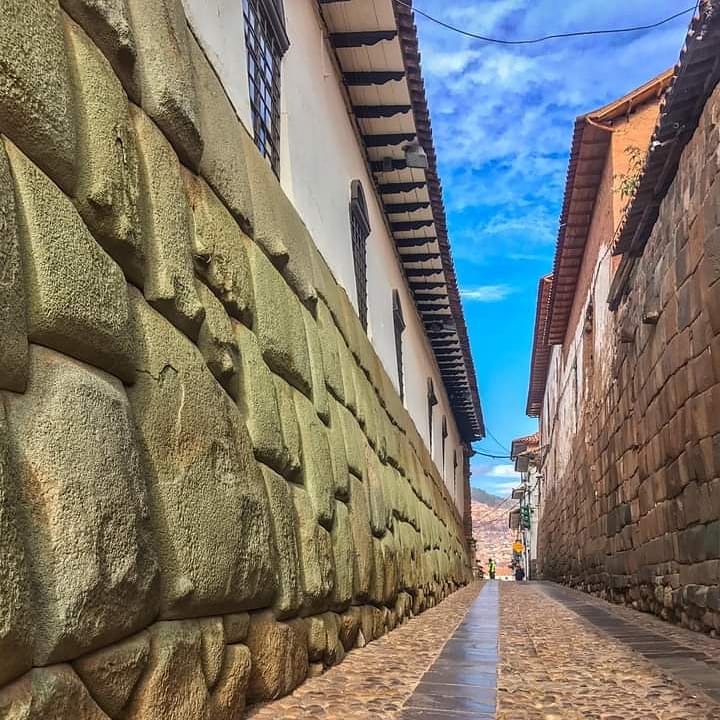
The Plaza de Armas is located one block away from this magnificent street, one of its walls was formerly a part of the Inca Roca palace, where people say that gold is buried inside it. Currently, this location is the Cusco archbishop’s palace.
Suecia Street: In colonial times, it was called “Calle Sucia” (Dirty Street). Vendors with their horses and mules made it filthy by carrying loads of products. To manage it, people worked together to sweep and keep it clean, they did this, especially on the eve of Corpus Christi or Holy Monday.
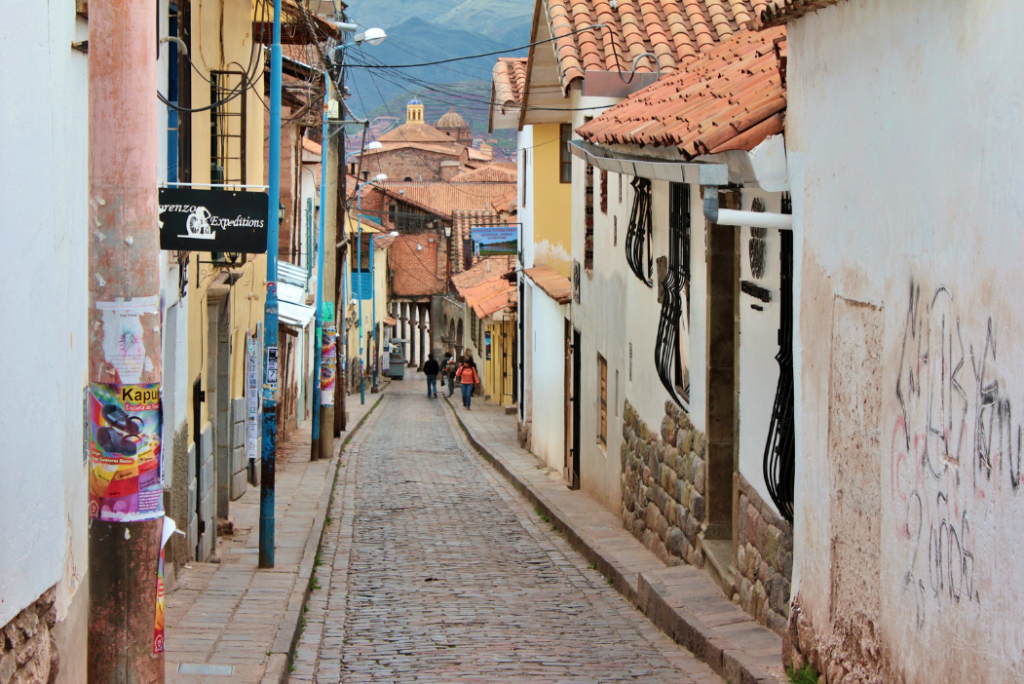
This is how “Calle Sucia” (Dirty Street) changed into the weird names “Calle Suecia” or “Calle de Suecia” (Sweden Street). It is said that this change was made to hide its ugly past.
Amargura Street: This steep and tiring slope is also known as the Slope of the Inca because Spanish builders made some locals roll huge rocks down it. They did this by order of Francisco Pizarro, the Spanish conqueror, to use the stones in building the Cusco Cathedral, additionally, some Indigenous people stopped huge stone blocks from the top of this street, sometimes experiencing severe and fatal accidents. This is why the street was named “Mucchuicata,” which translates to “Slope of Bitterness.”
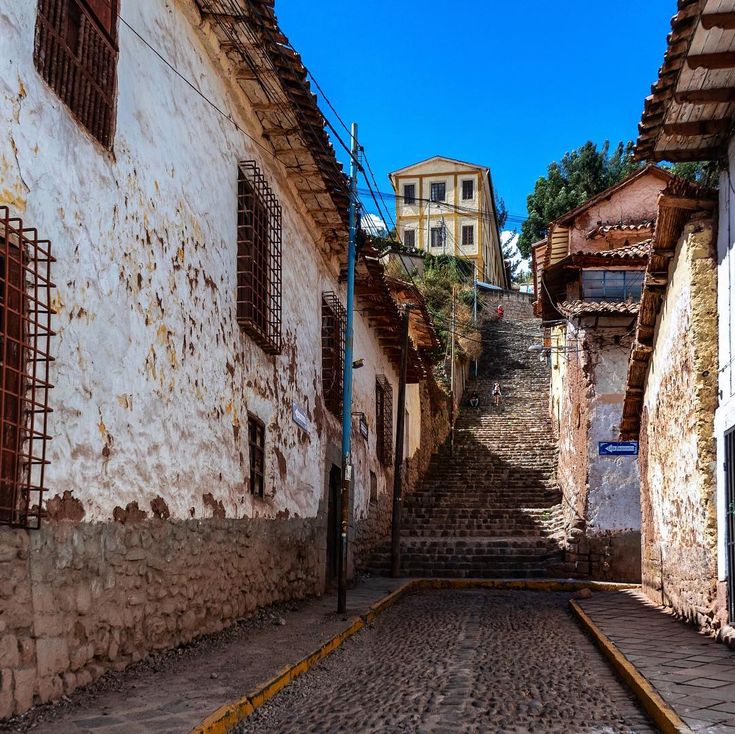
Ángel Carreño, a famous Cusco historian, says: “The huge stones rolled down the slope. Dozens of indigenous people armed with barriers barely contained them.” Many of them ended up with fractured feet. The Spanish overseers made Indigenous people work with sticks and whips from dawn until dusk, in exchange, Spaniards gave them just an “ardite” (a coin of very little value in old Castile)” This is why the slope was later called “Cuesta de la Amargura” (Slope of Bitterness) thanks to the many bitter moments our ancestors had to endure.
Siete Culebras Street: The name of this unusual street in Cusco originates from a small engraving of seven thin snakes on a stone wall. It is situated between the Church of San Antonio Abad and the Monastery of Las Nazarenas, two imposing and tall colonial structures that are now luxurious hotels.
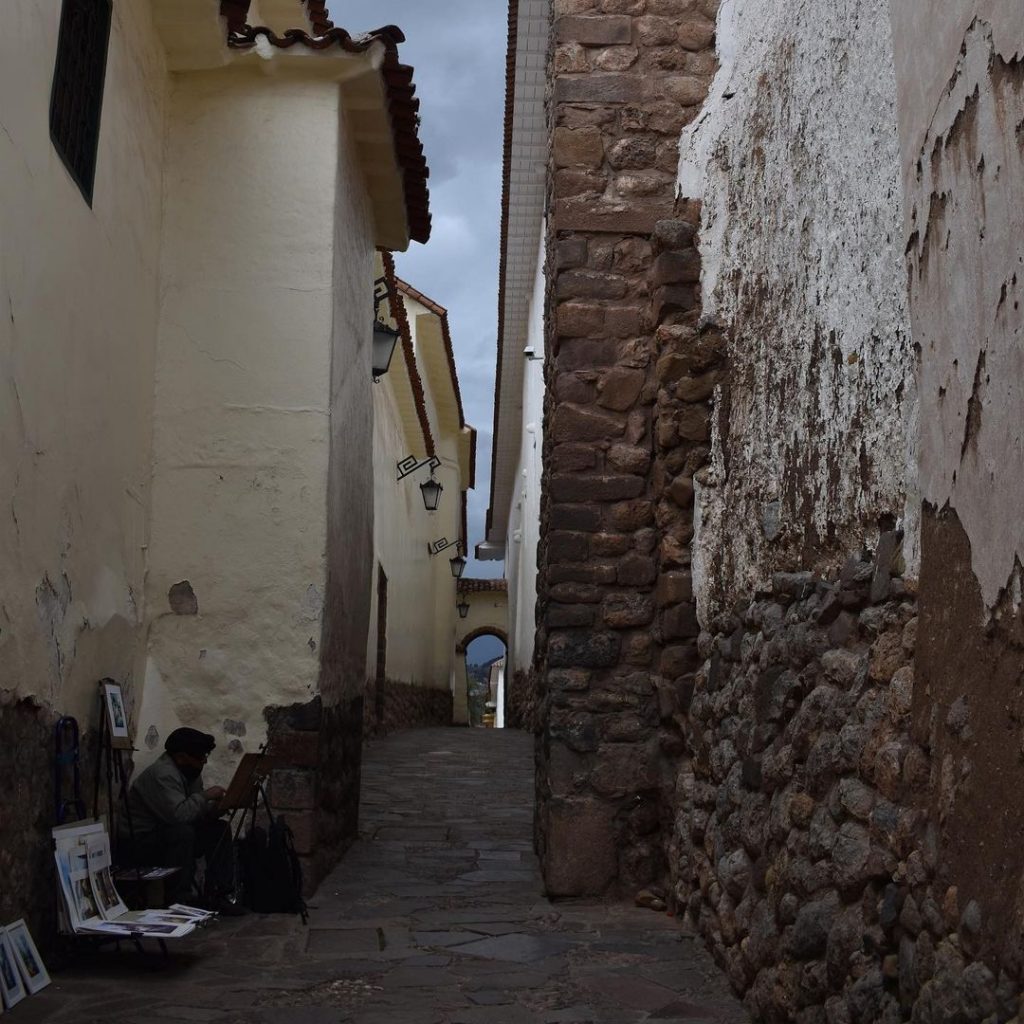
In the Inca period, this street was known as ‘Amaru Ccata,’ translating to “fourteen serpents”, the name comes from the fact that there are seven serpents on each side of the wall. The street has an Inca origin and is a pedestrian path measuring 2 meters in width and 102 meters in length, two arches support the high walls on either side. The street leads from the Plazoleta de las Nazarenas to Choquechaka Street.
Choquechaca Street: One of the main routes in the former San Blas parish, which was established on the Inca Ayllu of Tokocachi, is Choquechaca. Its Quechua name, Choqqe Chaka, comes from two aristocratic Indian brothers who had the surname “Choqqccque”, and who gave the order to build two plank-style stone bridges across a river.
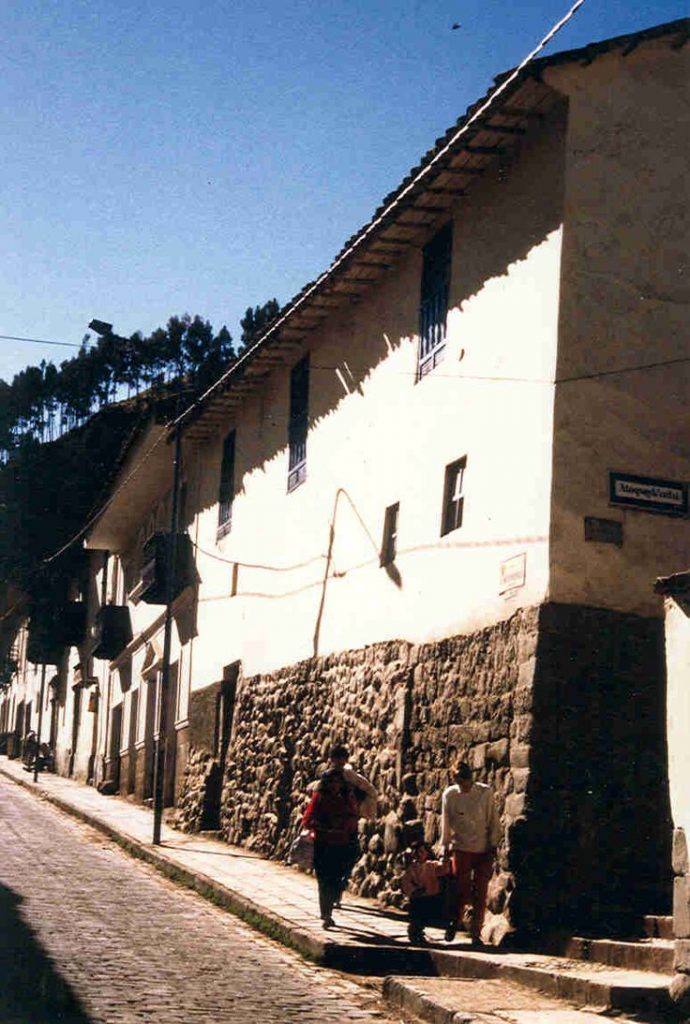
It is reported that there once stood an ancient Inca bridge at the intersection of Hatun Rumiyoc and Choquechaca. The old Inca canalization, over which the riverbed was buried in the early 20th century, is still noticeable beneath the street. The parallel street is Carmen Alto, which is the San Blas neighborhood’s most famous street.
Siete Angelitos: Many of the streets in Cusco have the number seven as one of their primary characteristics. “Calle Siete Angelitos”, or “Seven Little Angels Street”, is one of these streets, located in the neighborhood of San Blas. It’s called that because some of the stones there have angelic figures etched into them.
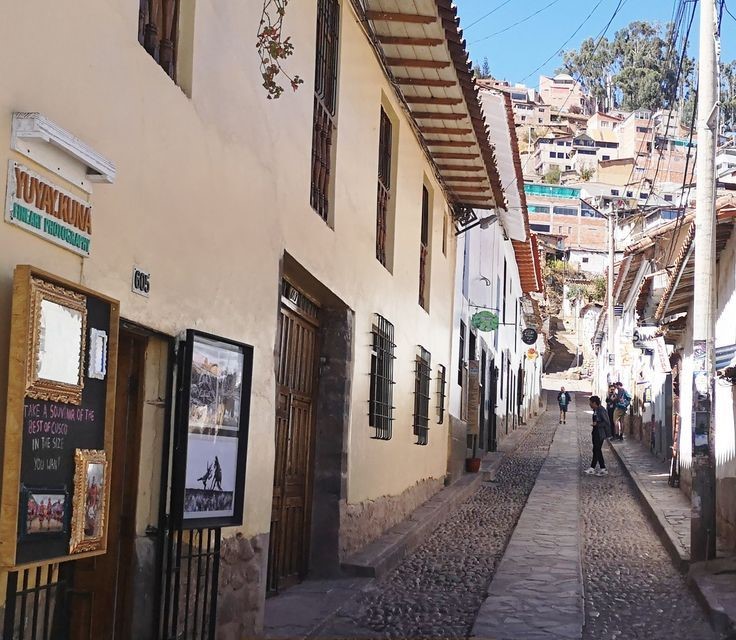
These angels are in a colonial mansion owned by Blas de Bobadilla, an old religious Cusqueño. Moreover, more angel figurines have been etched into the stones surrounding this well-known Cusco street over time.
Resbalosa Street is probably Cusco’s steepest slope, as its name indicates. It connects Plaza San Cristóbal to the area around Plaza de Armas. The name refers to both the steep incline and the potentially treacherous cobblestone pavement for pedestrians. Visitors who make their way to Sacsayhuamán or who want to take a self-portrait at the San Cristobal viewpoint often cross this street.
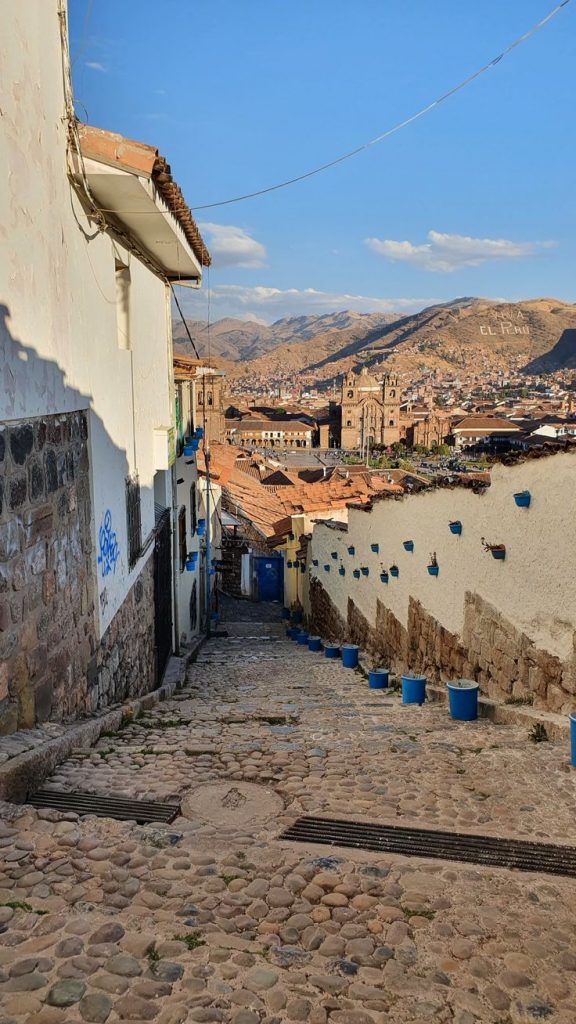
Resbalosa Street was also known as “Sikitakana” which translates to “you hit your butt”. (What a curious and proper name, right?) Today, it’s a calm street with lodging and dining options on both sides, it’s narrow, just like all Inca streets are. We recommend descending cautiously to prevent slipping, otherwise, you’ll understand in person why it’s called “the slippery one”.
These were just some of the curious names you’ll see in Cusco’s streets, which besides being fun or unusual have history and culture on every inch of them. Do you want to discover more? Travel with Viagens Machu Picchu!
We have assisted over 100,000 clients in realizing their dreams. Our guides are Cusco street experts who will provide extra details. Contact us to begin living your adventure in Cusco!
Viagens Machu Picchu, journeys that inspire, moments that last.
| Spanish > Viagens Machu Picchu |
| English >Viagens Machu Picchu |
| Portuguese > Viagens Machu Picchu |

